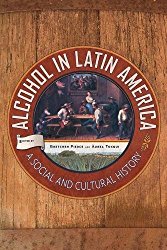
Aguardente, chicha, pulque, vino—no matter whether it’s distilled or fermented, alcohol either brings people together or pulls them apart. Alcohol in Latin America is a sweeping examination of the deep reasons why. This book takes an in-depth look at the social and cultural history of alcohol and its connection to larger processes in Latin America. Using a painting depicting a tavern as a metaphor, the authors explore the disparate groups and individuals imbibing as an introduction to their study. In so doing, they reveal how alcohol production, consumption, and regulation have been intertwined with the history of Latin America since the pre-Columbian era. Alcohol in Latin America is the first interdisciplinary study to examine the historic role of alcohol across Latin America and over a broad time span. Six locations—the Andean region, Argentina, Brazil, Chile, Guatemala, and Mexico—are seen through the disciplines of anthropology, archaeology, art history, ethnohistory, history, and literature. Organized chronologically beginning with the colonial era, it features five chapters on Mesoamerica and five on South America, each focusing on various aspects of a dozen different kinds of beverages. An in-depth look at how alcohol use in Latin America can serve as a lens through which race, class, gender, and state-building, among other topics, can be better understood, Alcohol in Latin America shows the historic influence of alcohol production and consumption in the region and how it is intimately connected to the larger forces of history.